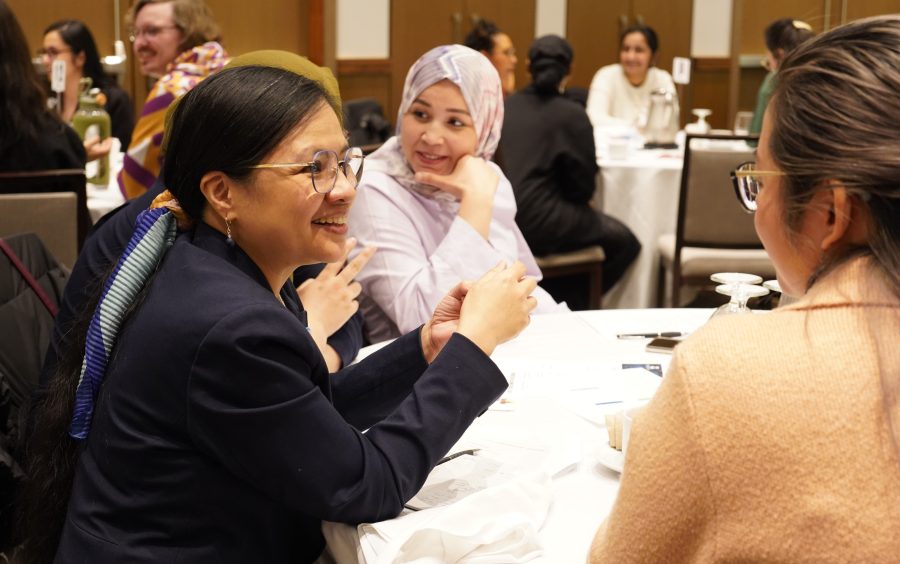DIVERSEcity’s Together Against Hate publication released with five calls to action
As we wrap up our 2025 Together Against Hate project, funded by a grant from United Way British Columbia, we have released a final publication that compiles some of the data, insights and workshop takeaways collected to serve as an ongoing community resource for anyone interested in taking a stand against racism and hate.
It also includes five calls to action captured at the Together Against Hate Community Forum on March 22, 2025, after an enlightening panel discussion, featuring Zara Chaudhry of the Inclusion Project, Mahado Hassan of Solid State, Dacious Richardson from Surrey Schools and moderator and social impact leader Daljit Gill-Badesha. They challenged us to think critically about how we can best serve marginalized communities, amplify voices and build more inclusive systems.
This conversation was complemented by interactive sessions with Ingrid Broussillon and Marialejandra Reyes, each of whom guided participants through activities that not only shed light on incidents of hate, but also provided tangible pathways to action — strengthening us all to bring these lessons back to our schools, workplaces and communities.
The forum reminded us that our collective work to end hate is ongoing, and each of us plays a vital role in this movement. Here are five calls to action that came out of the event.
5 calls to action against hate
1. Shift away from the illusion of inclusion
It’s time to shift away from the “illusion of inclusion” to a practice that enables stronger relationships, understanding of intersectionality as well as accountability. Let’s be open to unlearning, relearning, while listening and elevating diverse people’s voices.
Zara Chaudhry noted that a lot of engagement with BIPOC individuals has traditionally been “very transactional, focused on deliverables,” but true inclusion needs to focus on relationship building and investing back in communities.
2. Acknowledge where the power lies
It’s important to recognize “who is at the table” when decisions are made, but we need to expand that outlook to recognize “who is designing the table.” Most systems and institutions were not designed with people of colour in mind, leading to poorer outcomes in areas such as health, education and employment. Mahado Hassan said, “Often times, BIPOC individuals are engaged with as part of a checklist in the process.” Instead, let’s look at engagement as a process to build things together, so everyone can prosper.
3. Work together at the speed of trust
Take the time to develop trust among people and communities, getting to know each other before we make an ask. Zara Chaudhry said, “Trust is almost like a garden and you do have to cultivate it and it takes time. Gardens need time, effort and communities to plant the seeds and nurture the soil.” Further, when you harvest those seeds, make sure you replant them and invest in communities.
4. Create more spaces and capacity
Safe and inclusive spaces to advance dialogue can be rare, especially for youth and parents. We need to create more spaces, events and platforms to bring diverse voices to share and connect.
Institutions like schools need to better support those in leadership positions with the anti-racism training they would need to guide or be an ally in such discussions.
At the same time, let’s focus more on capacity building and mentorship for BIPOC individuals, who may hold a wealth of knowledge or expertise, but may not have the resources or platforms to easily demonstrate this.
5. Advance change, together
When we open our hearts to new perspectives and choose dialogue over silence, we challenge fear, build bridges and strengthen our communities. When we understand each other, we stand stronger together. So, we encourage you to be part of the conversation. Be part of the change. Join us — because real change starts with one courageous conversation at a time.
DIVERSEcity’s Sumaiyyah Adam, Manager of the Together Against Hate Project sums it up best: “Let the conversations we had be a call to action — for all of us to invest in relationships, amplify underrepresented voices and build networks of support that leave no one behind.”

